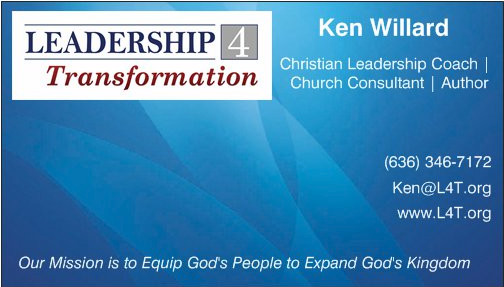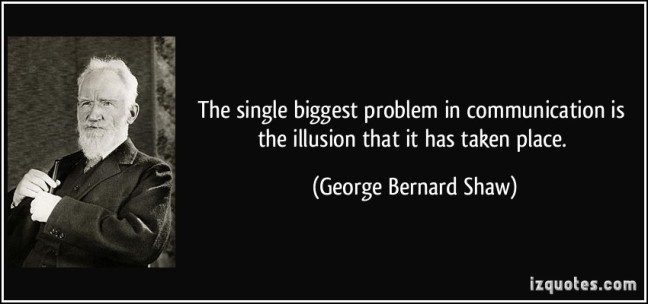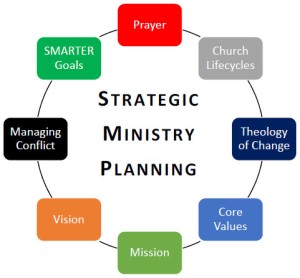
The gym where I walk most days has several motivational type sayings painted on one of the walls. “Today’s actions are tomorrow’s results,” is the one I like the most. It reminds me that the investment of eating right and exercising today will pay off in a healthier body in the future.
In a world where instant gratification has become the norm, as leaders, we need to remember that the most important results will usually come from small investments over time.
What does success look like in your ministry? This can be a challenging question for many pastors and ministry leaders. The word “success” has a lot of baggage associated with it. Too often we think about the business world where success is usually related to profits, customer satisfaction, stock price, or other money related terms. In the church world we are often so focused on not being a business, that we lose sight of results altogether. That too can be dangerous.
If you don’t like the word “success,” then change it to “fruit.” What would cause you to feel your ministry has been fruitful this year? This should lead us to set SMARTER Goals. [see my earlier post] Another way to think about this same concept is to imagine where you would like your ministry to be at the end of the year, or at some other date in the future.
- Pick an area of your ministry which you have been measuring, or one that you will be able to measure starting now.
This can be another challenge for many leaders in ministry. Some people don’t even like the mention of measuring things associated with the church. I would like to remind you that there are many examples of measuring things throughout the Bible. We know how many people Jesus fed, we know how many were saved on Pentecost , we even know the number of fish Simon Peter dragged ashore so the disciples could have breakfast with the risen Christ. (see John 21:11) Counting things, or measuring results, are not bad. As long as we are counting what counts to God.
Another challenge in the church world is that some of the most important things do not have a clear way for us to measure them. For example, a church may want to focus on growing disciples. A great goal, but how would you measure that? Great question! This is where we need to find some indicator we can measure and come to peace using it and realizing there may not be any way to “prove” we have been fruitful. Using the example above of growing disciples, I might suggest the church use something like the percentage of the congregation serving, or in a Christian community group (Sunday school, small group, Celebrate Recovery, Women’s or Men’s ministry, etc.), or financial giving. Would any of those be “proof” the church was growing disciples. No. But they could certainly be a great indicator.
Once you have an area of focus to measure, the next step is to identify a way to impact that measurement each week. This is usually much more challenging than just coming up with a goal or area of focus. In the book, The 4 Disciplines of Execution, author Sean Covey talks about the difference between “lag” and “lead” measures.
- Lag = measures the goal
- Lead = is predictive (measures something that leads to the goal), and is influenceable (something we can influence)
Here is an example most of us can relate to – losing weight. Let’s say we set a goal to lose 20 pounds. When we step on the scale that is a lag measurement. It is important because it is how we measure our goal, or progress toward our goal. But it is only measuring the results. We also need to identify one or two lead measurements. In this example, we might measure our calorie intake and our steps each day. By staying under a certain number of calories and taking the right number of steps, we will eventually see the results we want and achieve our goal.
Now is your opportunity to make this discussion real.
- What is a real goal you want to set for yourself or your ministry?
- What is the measurement for that goal?
- What are the one or two lead measures you will use to ensure will achieve this goal?
The mission Christ gave us is too important for us to just hope we drift into a more fruitful ministry. As leaders in the church it is our responsibility to take an active role in this process. Yes, it is challenging. But remember, God is with us!
Here are a few suggested next steps:
- Read the book, The 4 Disciplines of Execution by Sean Covey.
- Work with a professional coach who can provide encouragement, resources, and accountability.
- Schedule a special session with your team to identify a Wildly Important Goal and the appropriate lag and lead measurements.
Check out my church leadership online webinars at: www.leadership4transformation.thinkific.com
Ken Willard, PCC
Author | Professional Certified Coach
Ken@L4T.org | www.L4T.org












 First responders are amazing people. These men and women run toward dangerous situations, while the rest of us run away. Yes, that is part of their training. However, I also believe that these courageous individuals are wired different from other people. Studies have found that when people are put in stressful or threatening situations, changes in the brain functioning occur. The more sophisticated frontal-lobe portion of the brain—which is responsible for planning, impulse control, problem solving, and organizing—shuts down. Most of the brain’s activity is registered in the amygdala, which is in a more primitive part of the brain. This triggers the “fight-or-flight” responses that are geared toward self-protection. The same type of changes in brain functions happen when a person gets angry, is insulted, or generally feels threatened. I’m sure we can all recall times where we were in environments that were not physically threatening, but a person or a situation was making us feel so uncomfortable we started having trouble thinking clearly or even communicating coherently.
First responders are amazing people. These men and women run toward dangerous situations, while the rest of us run away. Yes, that is part of their training. However, I also believe that these courageous individuals are wired different from other people. Studies have found that when people are put in stressful or threatening situations, changes in the brain functioning occur. The more sophisticated frontal-lobe portion of the brain—which is responsible for planning, impulse control, problem solving, and organizing—shuts down. Most of the brain’s activity is registered in the amygdala, which is in a more primitive part of the brain. This triggers the “fight-or-flight” responses that are geared toward self-protection. The same type of changes in brain functions happen when a person gets angry, is insulted, or generally feels threatened. I’m sure we can all recall times where we were in environments that were not physically threatening, but a person or a situation was making us feel so uncomfortable we started having trouble thinking clearly or even communicating coherently.

 Leaders – Are you starving your team?
Leaders – Are you starving your team?
 Years ago as a DDI facilitator, I learned a very simple and effective acronym to ensure we are giving others feedback they can use. It is called “S.T.A.R.” and stands for: Situation or Task, Action, and Result. What was the situation your team member was engaged in, or what was the task they were working on? What did they say or what action did they take? What was the result? The more specific you can get each element, the better. Here is an example of what that might sound like: “Patti, I overheard you talking to that customer on the phone a few minutes ago who was obviously upset. You really listened to her, and kept calm, even though I could hear her voice getting louder several times. I thought you did a wonderful job of representing the company without taking her complaint personal. Not only did you find a solution to her issue, I think you have won us a customer for life! Well done.” That would likely take only a minute or two of your time, and would certainly make Patti’s day. In fact, Patti would likely remember that conversation more than her last performance review.
Years ago as a DDI facilitator, I learned a very simple and effective acronym to ensure we are giving others feedback they can use. It is called “S.T.A.R.” and stands for: Situation or Task, Action, and Result. What was the situation your team member was engaged in, or what was the task they were working on? What did they say or what action did they take? What was the result? The more specific you can get each element, the better. Here is an example of what that might sound like: “Patti, I overheard you talking to that customer on the phone a few minutes ago who was obviously upset. You really listened to her, and kept calm, even though I could hear her voice getting louder several times. I thought you did a wonderful job of representing the company without taking her complaint personal. Not only did you find a solution to her issue, I think you have won us a customer for life! Well done.” That would likely take only a minute or two of your time, and would certainly make Patti’s day. In fact, Patti would likely remember that conversation more than her last performance review.







 Discipleship Coaching – the ministry of meeting with individuals one-on-one in order to help them take the next steps on their spiritual journey.
Discipleship Coaching – the ministry of meeting with individuals one-on-one in order to help them take the next steps on their spiritual journey.


 Learn the importance of embracing a theology of change by looking at the differences between form and function.
Learn the importance of embracing a theology of change by looking at the differences between form and function.
